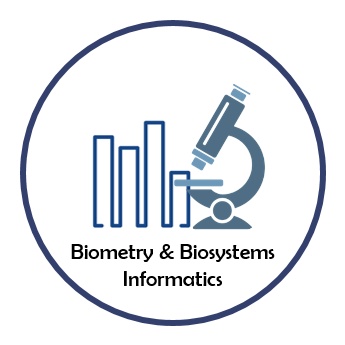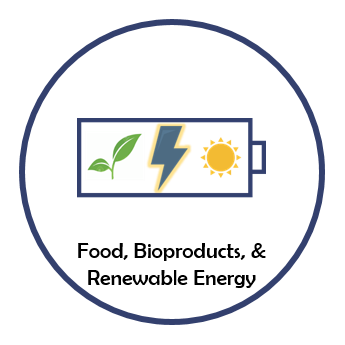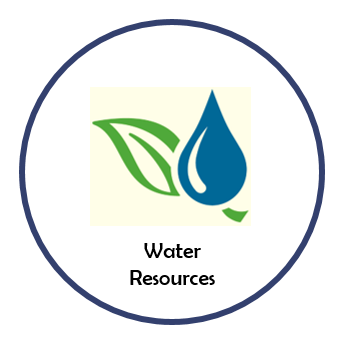|
|
|
|
|

From the UA course catalog: http://catalog.arizona.edu/
|
|
Typically Offered |
|
|||
|
|
Sp |
Su |
Fa |
W |
Prerequisites/ Enrollment Requirements |
|
BE GRADUATE CLASSES |
|||||
|
BE 501, Research Methods in Biosystems Engineering –To assist graduate students in planning and executing a research project, preparing a thesis or dissertation, and reporting research results in journal publications. Specifically, the course will guide students in the selection and statement of a graduate research project and the development of a research proposal, introduce proper research methods such as record keeping and intellectual property considerations, discuss ethical research methods and review written and oral methods for presentation of research. View Syllabus: UA |
✓ |
|
|
|
All BE graduate students must take this course. |
|
BE 505/506,* Modeling of Mass and Energy Flow in Soils – see SWES 505. |
|
|
|||
|
BE 513, Applied Biostatistics – Introductory and advanced statistical methods and their applications in ecology. Focuses on how research design dictates choice of statistical models; explores principles and pitfalls of hypothesis testing. View Syllabus: UA |
✓ |
|
|
|
|
|
BE 516A, Statistical Bioinformatics and Genomic Analysis – see MCB 516A. |
|
|
|||
|
BE 522,* Open-Channel Flow – see CE 522. |
|
NOT OFFERED AT THIS TIME |
|||
|
BE 523,* Biosystems Analysis and Design –Application of systems analysis to biologically related problems; computer modeling and use of simulations, optimization methods, decision support systems. Graduate-level requirements include a simulation project. May be co-convened with ABE 423. For graduate credit, additional work will be required. View Syllabus: UA |
✓ |
|
|
|
Familiarity with statistics |
|
BE 526,* Watershed Engineering – Design of waterways, erosion control structures and small dams. Methods for frequency analysis and synthetic time distribution of rainfall. Methods for estimating infiltration and runoff from small watersheds, flow routing and storm water management. Estimating erosion using the Revised Universal Soil Loss Equation. May be co-convened with ABE 426. For graduate credit, additional work will be required. View Syllabus: UA |
|
|
✓ |
|
CE 218 or AME 331 |
|
BE 527,* Computer Applications in Hydraulics – see CE 527. |
|
|
|||
|
BE 528,* Control of Erosion Processes – Focuses on the types of soil erosion, factors affecting it, and how to estimate erosion rates. Also, the student will learn how to design erosion control practices. May be co-convened with ABE 428. For graduate credit, additional work will be required. |
|
✓
|
|
|
MATH 124 or MATH 125 |
|
BE 534, Biosystems Analytics – This course provides a comprehensive introduction to Python for data analytics focused on the interpretation of biological data. The course is structured as a series of short lectures covering key concepts and analytical strategies using Python and cutting-edge open source packages for data analytics. The majority of the course focuses on hands-on exercises both in- and out- of class to develop practical coding skills for interpreting and analyzing high-dimensional biological data. Students work in a collaborative learning classroom to gain skills in (1) basic Unix and Python, (2) Python data structures functions, and files, and (3) data wrangling and visualization using IPython, NumPy, and pandas, and (4) analytics using machine-learning methods available in Scikit-Learn. These skills are taught by implementing real-world coding examples to manipulate and process biological data in Python, and effectively use data-oriented Python libraries to analyze and interpret data from biological systems. View Syllabus: UA |
✓ | ||||
|
BE 544, Aquaponics Engineering – This course begins with an overview of aquaponics "the culture of fish and plants together" and then provides an in depth guide into properly designing, building and troubleshooting aquaponics systems, especially on the commercial scale. Engineering aspects of aquaponics systems will be thoroughly discussed in addition to biochemical processes, filtration and designing for various flow rates, fish species and plants. The course provides students with numerous hands-on learning activities and offers students the opportunity to advance their knowledge of aquaponics well beyond the basics. View Syllabus: UA |
✓ | Fluid Dynamics recommended | |||
|
BE 547,* Sensors and Controls – Principles of electric circuits. Selection, interfacing and calibration of digital and analog sensors to measure physical variables. Optical electrochemical and piezoelectric biosensors. Basic bioprocess control. Graduate-level requirements include a special project. May be co-convened with BE 447. For graduate credit, additional work will be required. View Syllabus: UA |
|
|
✓ |
|
CHEM 151 or (CHEM 103A and CHEM 103B) or (CHEM 105A and CHEM 105B) or MSE 110 |
|
BE 552,* Globalization, Sustainability, and Innovation- Globalization, sustainability and innovation constitute the three principal forces that drive the world of the 21st century -- economically, politically, socially and culturally. Aimed at engineering and science students, the objective of the course is to foster among them global intelligence (or global smarts), defined as an inclusive and cross-disciplinary working knowledge of how the globe operates today, including (1) how global infrastructures in communication, transportation and information technology have transformed how nations and corporations conduct business, (2) how nurturing sustainability ensures competitive advantage while ignoring it imperils nations as well as the planet, and (3) how technological innovation is critical both in maintaining competitive advantage and in providing the essential sustainable solutions to many of our current global challenges. In a flat world, fostering global intelligence has become a vital component of a well-rounded engineering and science education. Graduate-level requirements include a 20-page in-depth written analysis of a topic on globalization or sustainability. View Syllabus: UA |
✓ |
|
|
|
|
|
BE 555,* Soil and Water Resources Engineering – Introduction to soil and water relationships, irrigation systems, irrigation water supply, and irrigation management; basic designs. Graduate-level requirements include a special project on a current irrigation topic. May be co-convened with ABE 455. For graduate credit, additional work will be required. View Syllabus: UA |
|
|
✓ |
|
CE 218 or AME 331 |
|
BE 556,* Irrigation Systems Design – Design and operation of surface, sprinkler, and trickle irrigation systems based on economic and environmental criteria. Graduate-level requirements include a special project. May be co-convened with ABE 456. For graduate credit, additional work will be required. View Syllabus: UA |
✓ Odd yrs |
|
|
|
CE 218 |
|
BE 558,* Soils, Wetlands, and Wastewater Reuse – Water quality and system design for agricultural drainage and wastewater and recharge systems. Graduate-level requirements include a special project. This course also covers environmental permitting, including NEPA and ACOE 404 permits. May be co-convened with ABE 458. For graduate credit, additional work will be required. |
✓ Even yrs |
|
|
|
CE 218 or AME 331 |
|
BE 559,* Design of Onsite Wastewater Treatment and Dispersal Systems – Covers issues and concepts relating to the design of domestic and small commercial onsite wastewater treatment and recycling systems. This course is typically offered every even spring semester. May be co-convened with ABE 459. For graduate credit, additional work will be required. |
✓ Even yrs |
|
|
|
|
|
BE 567,* Advanced Watershed Hydrology – see WSM 567. |
|||||
|
BE 575A,* Physiology of Plant Production under Controlled Environment – see PLS 575A. |
|
|
|||
|
BE 579,* Applied Instrumentation for Controlled Environment Agriculture -Students will learn principles, methods, and techniques related to the measurement and control of environmental factors affecting plant growth and plants' surrounding climate under controlled environments. Light intensity, light quality, temperature (air, plant), relative humidity, carbon dioxide, water, air current, and related factors are important variables in controlled environment plant production systems to measure and control since they affect and determine plant growth and development and processes such as heating, ventilating and air conditioning, fertigation etc. Therefore, students will learn application of sensors, instrumentation and designing of a simple system to measure and control environments for plant production systems. Graduate-level requirements include higher grading percentages for midterm, design project, and final exams. May be co-convened with ABE 479. For graduate credit, additional work will be required. View Syllabus: UA |
✓
|
|
|
|
MATH 113 and PHYS 102 |
|
BE 580, Introduction to Systems Biology – see MCB 580. |
|
|
|||
|
BE 581A,* - see CHEE 581A. |
|
|
|||
|
BE 581B,* Cell and Tissue Engineering – Development of biological engineering methods including applied genetics, metabolic regulation, and bioreactors employed in industrial processes for manufacture of pharmaceuticals and in the design of tissue engineered devices to replace normal physiological function. Graduate-level requirements include two additional design projects, homework problems requiring a greater degree of mathematics, and exams containing questions which evaluate a higher level of thought processes. |
✓ |
|
|
|
MATH 254 |
|
BE 582,* Integrated Engineered Solutions in the Food-Water-Energy Nexus – Integrated engineered solutions in the Food-Water-Energy Nexus are transformational integrated designs -- drivers of change -- that are necessary to make feeding an increased global population this century possible, environmentally sustainable, and cost-effective. Graduate students and undergraduate students will be mixed in teams, and each team designs an integrated engineered solution in the Food-Water-Energy Nexus. Each graduate student will be further required to provide detailed design for a chosen specific component of his/her team¿s designed integrated engineered food-water-energy system. The grade for each graduate student for the Team Design (which accounts for 30% of the final grade as shown above) will be 50% of the team design grade and 50% of his/her individual component design grade. May be co-convened with ABE E 482. For graduate credit, additional work will be required. View Syllabus: UA |
|
|
✓ |
|
|
|
BE 583,* Controlled Environment Systems – An introduction to the technical aspects of greenhouse design, environmental control, hydroponic crop production, plant nutrient delivery systems, intensive field production systems, and post-harvest handling and storage of crops. Graduate-level requirements include submission of a comprehensive report related to a specific greenhouse design project. May be co-convened with ABE 483. For graduate credit, additional work will be required. View Syllabus: UA |
|
|
✓ |
|
|
|
BE 586,* Biomaterial-Tissue Interactions – Biomaterials and their applications; protein-surface and blood-biomaterial interactions, inflammation, wound healing, biocompatibility, implants, and tissue engineering. Graduate-level requirements include: Three(3) journal club presentations and peer reviews for all presentations. Term paper requires extensive theoretical background and should be formatted to a grant proposal to external funding agencies such as NSF or NIH. May be co-convened with ABE 486. For graduate credit, additional work will be required. |
✓ |
|
|
|
CHEM 103A and CHEM 103B |
|
BE 587,* Metagenomics: From Genes to Ecosystems – Environmental genomics is revolutionizing our understanding of microbes from the environment to human health, towards a holistic view of ecosystems or "One-Health". At its core are new molecular methods called metagenomics to sequence DNA directly from an environmental sample, thus capturing the whole microbial community and bypassing culture. Modern (Next-Gen) sequencing technologies offer vast new datasets of short sequence reads representing these microbial communities, however many hurdles exist in interpreting data with high species complexity and given specialized software for microbial metagenomic analyses. This course focuses on the science of metagenomics towards understanding (1) questions that metagenomics can address, (2) possible approaches for metagenomic sequencing and analysis, and (3) how genes, pathways, and environmental context are translated into ecosystem-level knowledge. This course alternates between traditional lectures and hands-on experience with programming, bioinformatics tools, and metagenomic analysis. The course concludes with several weeks of seminar-format discussions on current research in metagenomic data analysis and a final project of your choice analyzing real-world experimental data. View Syllabus: UA |
|
|
✓ |
|
MCB 416, ABE 201, MIC 205 are recommended |
|
BE 588, Micro and Nano Transducer Physics and Design – see AME 588. |
|
|
|||
|
BE 589A, Fabrication Techniques for Micro and Nano Devices – see AME 589A. |
|
|
|||
|
BE 589B,* Bio Micro/Nanotechnology Applications –This course tackles the applications of modern micro/nano devices or systems including lab-on-a-chip, DNA/protein array, drug carriers and other therapeutic systems, neuroscience applications, and food/agricultural systems. Toward this end, three different topics will be covered in this class: (1) brief overview on modern micro- and nanofabrication technologies, (2) biophysics principles for analytes and its recognition, and (3) various sensing modalities specific to these systems. Graduates participate in a journal club. May be co-convened with ABE 489B. For graduate credit, additional work will be required. |
✓ |
|
|
|
CHEM 152 or MSE 110; Basic familiarity with cells, proteins, and DNA |
|
BE 592, Directed Research – Student will participate a faculty-led research within the University of Arizona as an individual or as a small group. The faculty member will provide clear objectives at the beginning of the class, and meet with the student on a regular basis to track his/her progress. Towards the end of the class, the student needs to make oral presentation(s) in laboratory meeting and submit a written report to the faculty member. Department Consent is required. The Directed Research Application (PDF | Fillable PDF) must be completed before registering for this class. Please register before the first day of class. Units: 1.00 - 3.00 |
✓ | ✓ | ✓ | ||
|
BE 593, Internship – Students can take 1-6 units of specialized work on an individual basis, consisting of training and practice in actual service in a technical, business, or governmental establishment. Internship Work Plan |
✓ |
✓ |
✓ |
✓ |
|
|
BE 596A/B, Biosystems Engineering – The development and exchange of scholarly information, usually in a small group setting. The scope of work shall consist of research by course registrants, with the exchange of the results of such research through discussion, reports, and/or papers. View Syllabus: UA |
✓ ✓
|
|
|||
|
BE 597C,* Greenhouse Pest Management: Methods and Practice – see ENTO 597C. View Syllabus: UA |
✓ |
|
|
|
|
| BE 599, Independent Study – Qualified students can take 1-4 units to work on an individual basis with professors who have agreed to supervise such work. Graduate students doing independent work which cannot be classified as actual research will register for credit under course number 599, 699, or 799. The Independent Study Proposal Form must be completed before registering for the class. Please Register before the 1st day of class. |
✓ ✓ ✓ ✓ |
|
|||
| BE 601,* Research Methods in Biosystems Engineering – see BE 501. |
|
|
|||
| BE 605,* Modeling of Mass and Energy Flow in Soils – see SWES 505 |
|
|
|||
| BE 613, Applied Biostatistics – see BE 513. |
|
||||
| BE 622, Sedimentation Engineering – see CE 622. |
|
|
|
|
NOT OFFERED AT THIS TIME |
|
BE 688, Statistical Consulting – see STAT 688. |
|
|
|
|
|
|
BE 693, Internship – Students can take 1-6 units of specialized work on an individual basis, consisting of training and practice in actual service in a technical, business, or governmental establishment. |
✓ |
✓ |
✓ |
✓ |
|
|
BE 699, Independent Study – Qualified students can take 1-5 units to work on an individual basis with professors who have agreed to supervise such work. Graduate students doing independent work which cannot be classified as actual research will register for credit under course number 599, 699, or 799. The Independent Study Proposal Form must be completed before registering for the class. Please Register before the 1st day of class. |
✓ |
✓ |
✓ |
✓ |
|
|
BE 900, Research – Graduate students can take 1-16 units of individual research, not related to thesis or dissertation preparation. |
✓ |
✓ |
✓ |
✓ |
|
|
BE 908, Case Studies – Graduate students can take 1-5 units of individual study of a particular case or report. |
✓ |
✓ |
✓ |
✓ |
|
|
BE 909, Master’s Report – Candidates seeking their Master’s degree can take 1-8 units of individual study, special project, or formal report submitted in lieu of thesis for certain master's degrees. |
✓ |
✓ |
✓ |
✓ |
|
|
BE 910, Thesis – Candidates seeking their Master’s degree can take 1-16 units to conduct their research for the master's thesis. |
✓ |
✓ |
✓ |
✓ |
|
|
BE 920, Dissertation – Candidates seeking their Doctoral degree can take 1-9 units to conduct their research for the doctoral dissertation. |
✓ |
✓ |
✓ |
✓ |
|
|
AME 588,* Micro and Nano Transducer Physics and Design – Principles, design, and performance of micro and nano transducers and applications of unique properties of micro and nano transducers for biological and engineering problems. May be co-convened with AME 488. For graduate credit, additional work will be required. |
✓ |
|
|
|
AME 250 and (ECE 207 or ABE 447); AME/ABE 589 Recommended |
|
AME 589A,* Fabrication Techniques for Micro and Nano Devices – Techniques for the design, fabrication, and testing of traditional microelectromechanical systems (MEMS) and nanodevices. May be co-convened with AME 489A. For graduate credit, additional work will be required. |
|
|
✓ |
|
ECE 207 or ABE 447; Completion of Laboratory Chemical Safety Course |
|
CE 522,* Open-Channel Flow – Differential equations governing unsteady flow in open channels. Simple surface waves in subcritical and supercritical flows. Introduction of kinematic, diffusion, and dynamic wave methods. Applications to reservoir routing, dam break flow, and overland flow. May be co-convened with CE 422 and 622. For graduate credit, additional work will be required. |
✓ |
|
✓ |
|
CE 323 or consent of instructor – NOT OFFERED AT THIS TIME |
|
CE 527,* Computer Applications in Hydraulics – Computer modeling of surface water hydrology, flood plain hydraulics and water distribution systems. Theoretical basis. Application and design studies. May be co-convened with CE 427. For graduate credit, additional work will be required. |
|
|
✓ |
|
CE 323 or consent of instructor |
|
CHEE 581A,* Engineering of Biological Processes – Applying principles of engineering, science, and mathematics (including statistics, kinetics, sensors, bioreactor design, and scale up) to explore and be familiar with the principal areas of biological engineering such as food process engineering, tissue engineering, and other large-scale fermentation processes. May be co-convened with CHEE 481A. For graduate credit, additional work will be required. |
|
|
✓ |
|
MATH 254 and MCB 182 or MIC 205A or CHEE 450 or instructor consent. |
|
ENTO 597C,* Greenhouse Pest Management: Methods and Practice – Pest management skills development in the Controlled Environment Agriculture Center (CEAC) teaching/research greenhouses, with hands-on assignments, and group discussion covering pest management principles, methods, and current practice. May be co-convened with ENTO 497C. For graduate credit, additional work will be required. |
✓ |
|
|
|
PLS 217 |
|
MCB 516A, Statistical Bioinformatics and Genomic Analysis – Introduces statistical methods and algorithms for analysis of high-throughput experiments in molecular biology using analysis of gene expression microarrays as a leading example using hands-on experience with data analysis, critical review of literature, and communication of the results. |
|
|
✓ |
|
Basic statistical knowledge and programming experience |
|
MCB 580,* Introduction to Systems Biology – Course explores the structure and function of these circuits through discussion of the relevant literature and by building and testing mathematical models of simple/toy circuits. Emphasis will be placed on key concepts such as hysteresis, ultrasensitivity, adaptation, robustness, and noise propagation. May be convened with MCB 480. For graduate credit, additional work will be required. |
|
|
✓ |
|
|
|
PLS 575A,* Physiology of Plant Production under Controlled Environment – Critical controlled environment issues and practices of plant production in greenhouse, plant production factory, tissue culture vessels and post-harvest storage, with an introduction to the current research status in these areas. May be co-convened with PLS 475A. For graduate credit, additional work will be required. |
✓ |
|
|
|
Introductory plant physiology course |
|
MATH 688, Statistical Consulting – The goal of this course is to teach statistics students to be effective statistical consultants. This is an advanced course in the selection and use of tools and statistical methods to analyze and interpret scientific, business and medical studies. This course will provide students with the ability to effectively and accurately acquire and convey information in verbal and written presentations. |
✓ |
|
|
|
STAT/MATH 571A; STAT/MATH 571B, or equivalent; Working knowledge of Stata, SAS, SPSS, or R (or equivalent). Preferred: Probability & Math Statistics sequence (STAT/MATH 564/566). |
|
SWES 505, Modeling of Mass and Energy Flow in Soils – Water flow in soils; closely related problems of solute, pollutant, and heat transfer; emphasis on current concepts and research. May be co-convened with SWES 605. |
✓ |
|
|
|
MATH 254 |
|
WSM 567,* Advanced Watershed Hydrology – Advanced topics in watershed hydrology; rainfall-runoff, infiltration, overland flow routing, sediment modeling, statistical analysis, and research methods in hydrology. May be co-convened with WSM 467. For graduate credit, additional work will be required. |
✓ |
|
|
|
WSM 460 |





